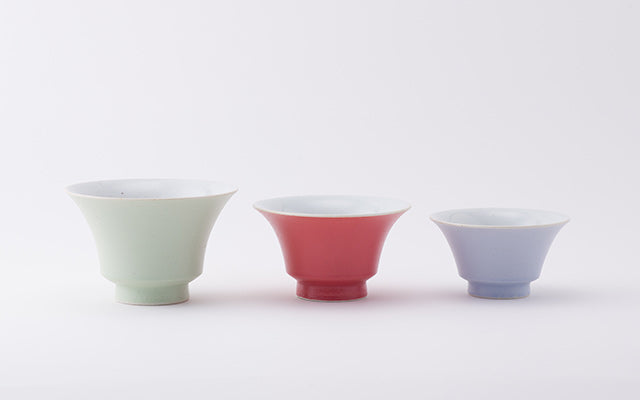
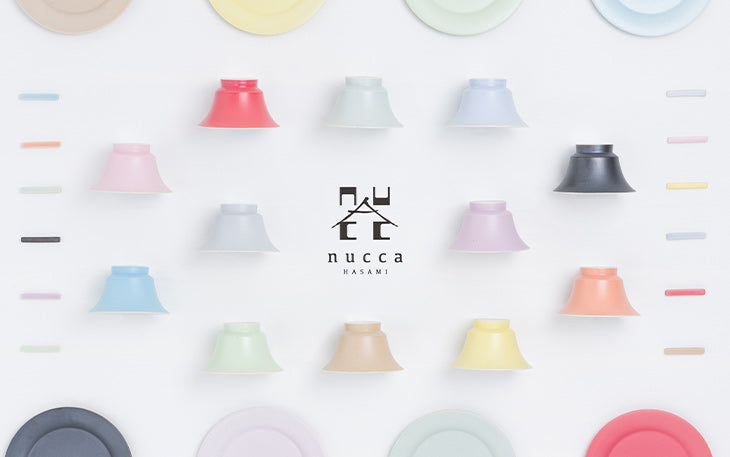
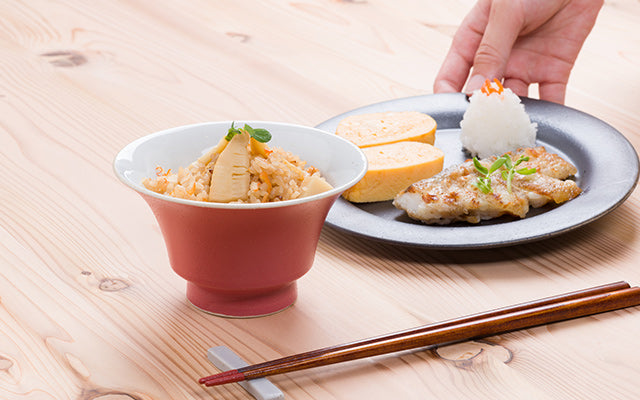
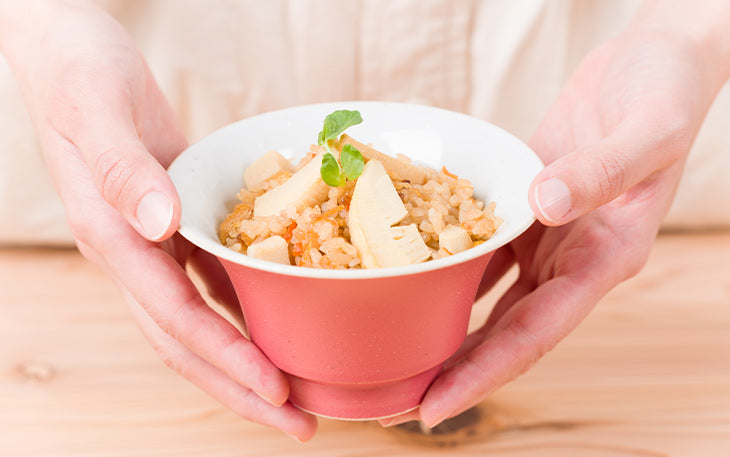

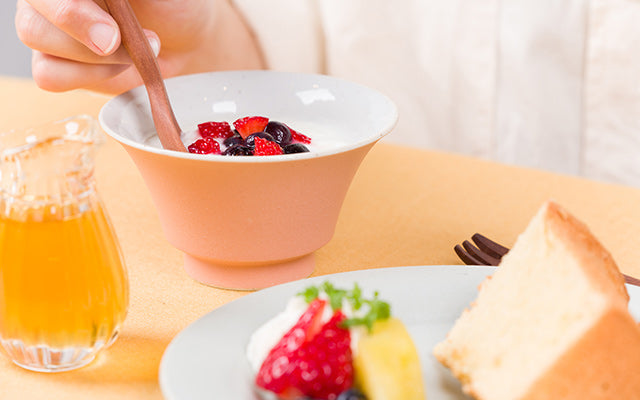
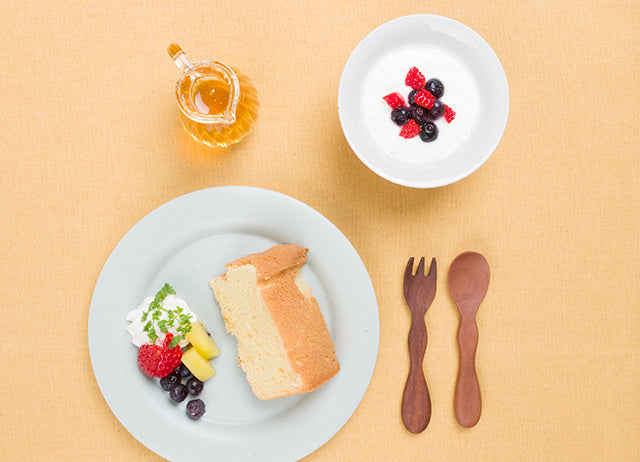
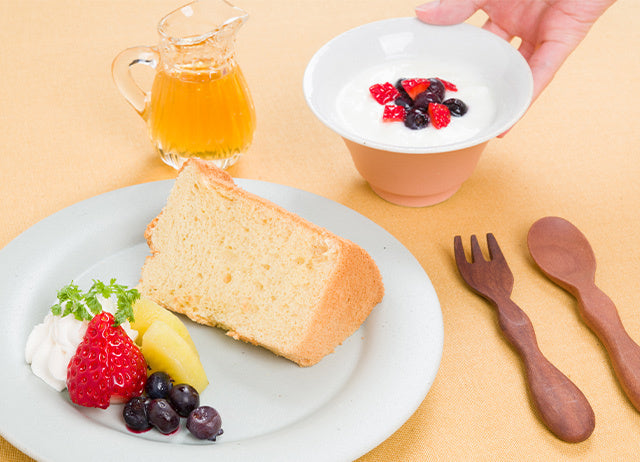
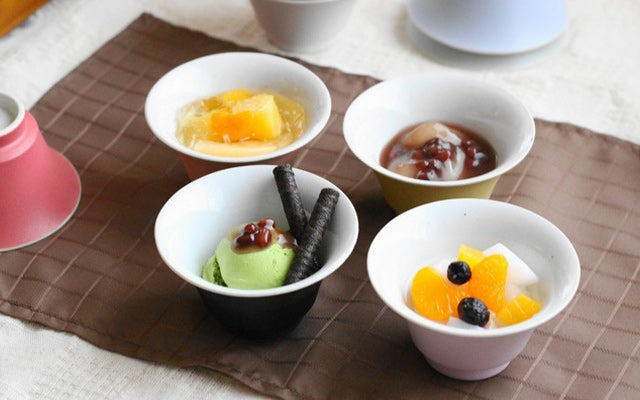
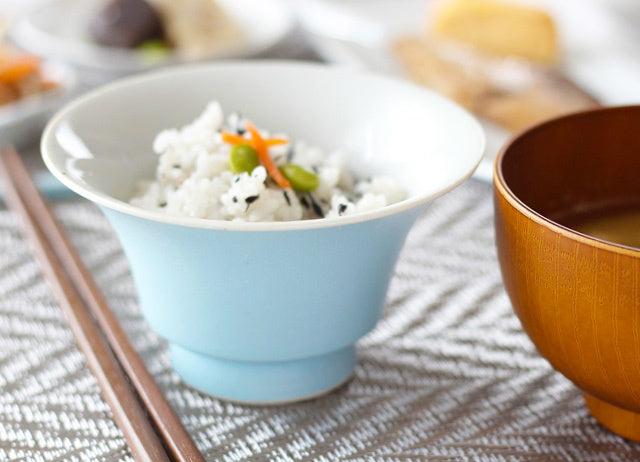
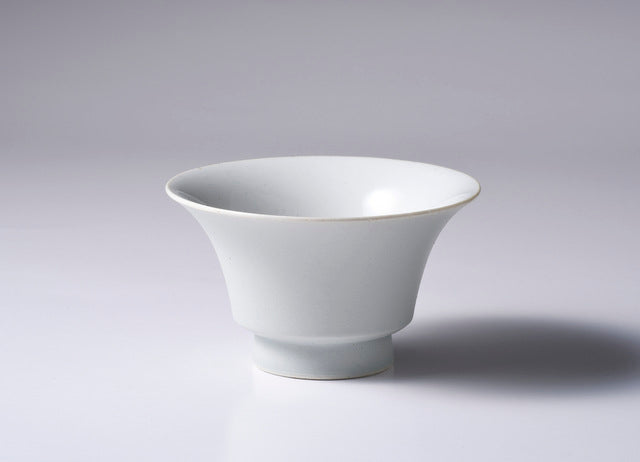
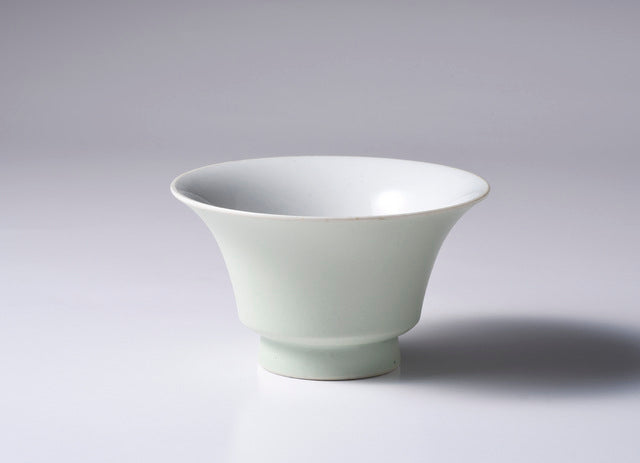
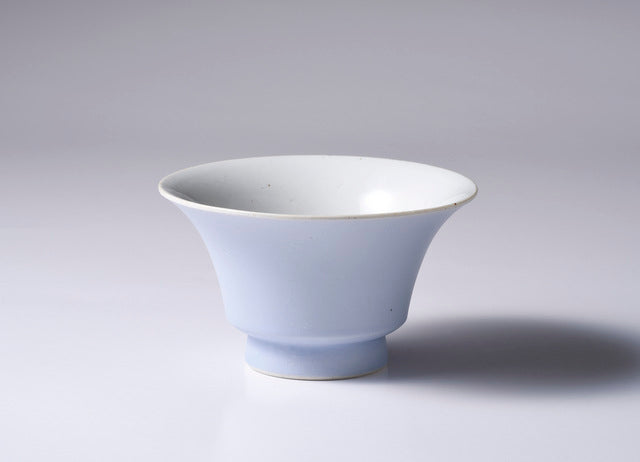


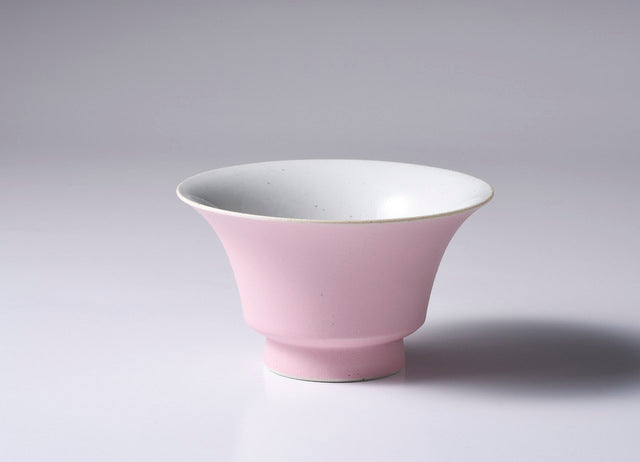


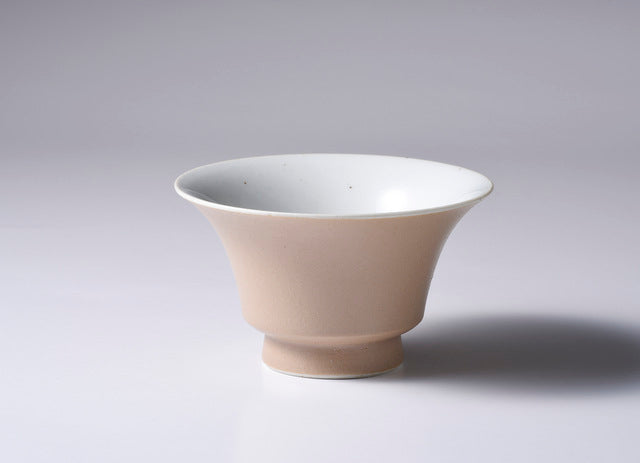
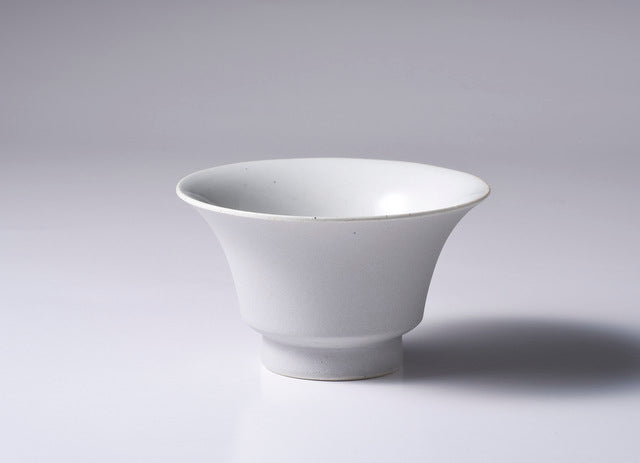
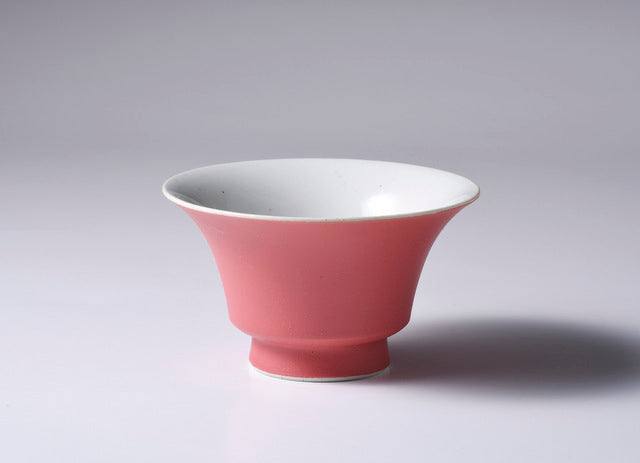

Hasami-yaki bowl | JIYU - nucca -

Beautiful, Easy to Use. New Hasami Pottery.
This beautiful shape might not be familiar, but it's actually an arrangement of the morning glory shape from traditional Hasami pottery's Kurawanka bowls.

There's a reason for this shape: it's easy to hold, easy to eat from, easy to stack. And when turned upside down, it opens wide like a fan. Highly functional and auspicious in shape. Your dining table will be colorfully decorated, making meals a little more enjoyable than usual. Truly recommended as a present or gift.

The Joy of Choosing, 12 Traditional Colors
A color variety that makes choosing fun. Having this many color options is actually quite challenging. The glazes (materials similar to paint that create colors) need to be mixed, but nucca can do this because Yamashita Toen, the manufacturer in Hasami, performs all processes in-house. It's actually very rare for a pottery to handle all processes internally.

There's also a commitment to the names of the colors. Traditional colors have been passed down in Japan for a long time. One characteristic is that many have subtle shades that can't be expressed in a single word - very Japanese. Expression through glazes is extremely difficult, but it's possible because all processes are done in-house. All colors have depth, making selection enjoyable whether for yourself or as a gift.

Too Good Just for Rice.
JIYU rice bowls actually go well with more than just rice. While plates have various uses, rice bowls are typically associated with rice. These rice bowls make you feel that rice bowls don't have to be exclusively for rice.

You can use them like bowls for enjoyably eating yogurt.

They also adorn your table as soup dishes.

They're lovely when combined in different colors as dessert bowls. Until now, "rice bowl = rice" was the norm, but JIYU rice bowls are multipurpose, making them delightful bowls that can be used in various scenarios.
Promotional Video for Yamashita Toen, nucca's Manufacturer

■ Sizes
Available in 3 sizes: Large (Φ12.6cm×H8.3cm), Medium (Φ11.8cm×H6.8cm), and Small (Φ10.5cm×H6cm). Large is ideal for fathers who eat well, Medium for mothers or children with good appetites, and Small works well as children's rice bowls or as small bowls for desserts. Each size actually has subtle differences in angle and design, thoughtfully crafted for optimal usability.

■ Colors
Soraironezu (Sky Gray)
A bright gray with blue tones like a lightly cloudy sky. An "elegant" color that perfectly expresses the slightly bright sky pattern of thinly clouded weather.

Byakuroku (Pale Green)
A pale green with white tones. Made from finely ground malachite mineral powder used in Japanese painting pigments.

Kamenozoki (Vat Glimpse)
In indigo dyeing, fabric is repeatedly dipped and removed from a vat. This color name means "just a glimpse" - as if white fabric was only briefly dipped.

Konparu-iro (Konparu Color)
A bright, vivid blue with green tones. Named "Konparu color" because it was favored by geisha whose okiya (lodging house) was located on Konparu Shindo in Shinbashi, Tokyo.

Usufuji-iro (Pale Wisteria)
A pale bluish-purple color. A gentler, more feminine version of wisteria color. Popular among women since the Heian period.

Sakura-iro (Cherry Blossom)
A pale crimson with red tones that evokes cherry blossom petals. The palest of red dyes. Also used to describe the reddish flush on the face or skin of a slightly intoxicated woman.

Shinonome-iro (Dawn Color)
A bright yellowish-red color reminiscent of the eastern sky beginning to lighten with the sun at dawn. Called "shinonome-iro" from light streaming through bamboo blinds (shino no me) into a dark room.

Tanpoopo-iro (Dandelion Color)
A vivid yellow derived from dandelion flowers. A color that evokes the warmth of spring.

Ama-iro (Flax Color)
A yellowish light brown color like spun flax thread. Not indigenous to Japan, but a relatively new color name used since the Meiji era.

Ginnezu (Silver Gray)
A bright gray with a slight blue tint, similar to silver. During the mid-Edo period, flashy colored kimono were prohibited, so wearing subtle color differences became fashionable. Silver gray was one such trendy color.

Shu-iro (Vermilion)
Refers to a slightly yellowish red like red seal ink. One of the oldest colors dating back to the Jomon period.

Nureba-iro (Wet Feather Color)
A glossy black like a crow's feathers. Used to describe black, lustrous women's hair.

■ Product Details
The surface has a matte texture for a high-quality feel, possible only through glaze customization. The nucca logo is stamped on the bottom. The bowls stack beautifully and when turned upside down, form a pleasing, widening shape. nucca's "JIYU" bowls intentionally use clay with high iron content to enhance texture - please enjoy this as part of their unique character.




■ Recommended for Gifts: "Hand-Pasted Box"
We offer special gift hand-pasted boxes (for an additional fee) for nucca's "JIYU" bowls. Available for single items or pairs. Please use according to the occasion. The sides feature a design inspired by the pottery, and the sturdy construction allows it to be used as a storage box even after gifting.


Gift Box Price: 550 yen (same price for all sizes)
- Small/Medium Single Item Box
- Small/Medium Pair Box
- Large Single Item Box
- Large Pair Box
*Note: For pairs, please choose based on the larger size.
■ Standard Packaging
The standard packaging is a simple yet well-balanced design with foil stamping on a kraft box.

■ Important Notes
- Each product varies slightly in size and glaze appearance. Please enjoy these individual differences as part of the charm of handcrafted items.
- Dishwasher and microwave safe. Not suitable for direct flame use.
Choose options






















